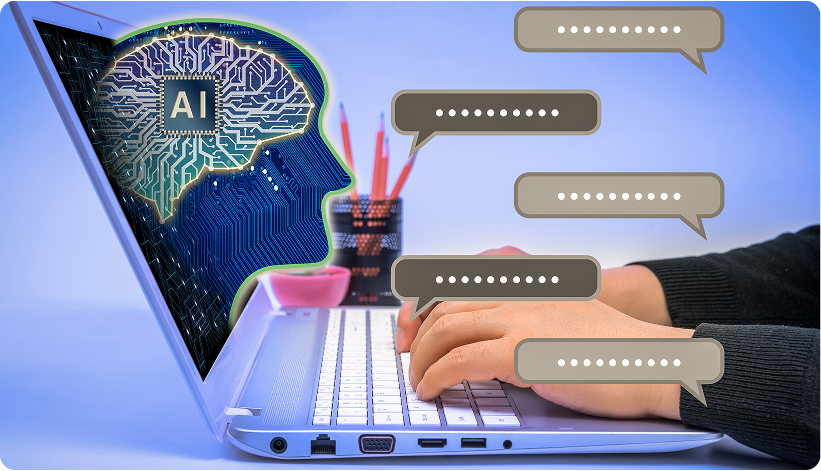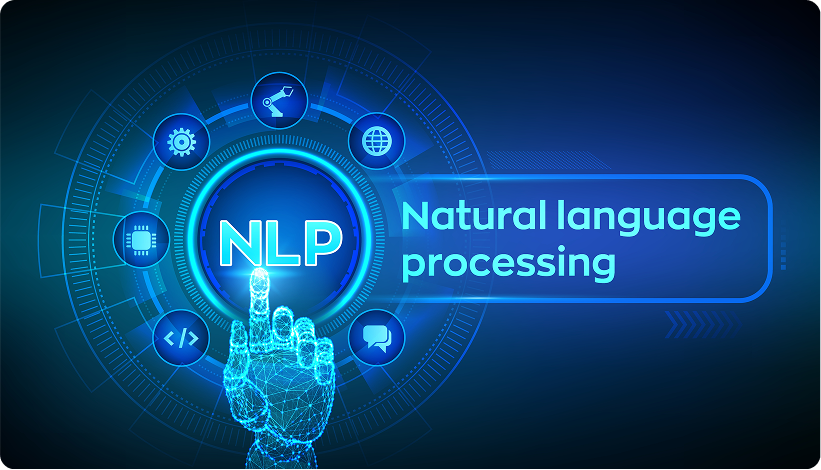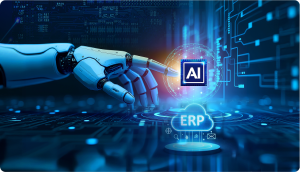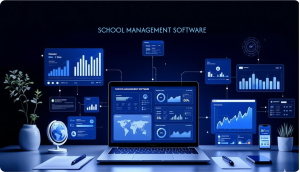
What is Natural Language Processing?
Natural Language Processing, or NLP, is all about helping computers understand the way we speak and write. It’s the technology behind things we use every day, like voice assistants, automatic translations, and even voice-based searches on our phones.
Put simply, NLP bridges the gap between how people communicate and how computers process information. By combining language studies, computer science, and artificial intelligence, it enables machines to not only recognize words but also understand their meaning, context, and sometimes even the emotions behind them.
In this blog, we’re going to explore what NLP really is, how it works, why it matters in today’s digital world, and the many ways it’s transforming the way we live, work, and interact with technology.
Why NLP Matters in Today’s World
We’re surrounded by text, emails, chats, social media posts, reviews, articles, legal documents, you name it. Now imagine if computers could read and understand all that we do. That’s exactly what Natural Language Processing (NLP) helps with.
Most of this text is unstructured, meaning it doesn’t follow a set format. NLP steps in to make sense of the mess. It helps machines pull out useful insights, respond to questions, summarize long documents, and even figure out how people feel based on what they write.
From helping doctors with patient notes to improving customer support and spotting trends online, NLP is now being used across all kinds of industries. What used to be high-end tech is now a must-have for any business that wants to save time, improve service, and stay ahead. NLP isn’t just useful, it’s essential in today’s digital world
Over 80% of business-relevant information is stored in unstructured formats like emails, PDFs, or social media posts. NLP helps make sense of it all.
Key Components of NLP
To understand how NLP works, we need to look at the main parts that make it possible. These core components help computers read, understand, and respond to human language.
Text Processing
Before any analysis, raw text needs to be cleaned and structured. This step includes:
- Removing stop words (like “and”, “the”)
- Correcting spelling errors
- Converting text to lowercase
- Tokenizing (splitting text into words or phrases
This helps prepare the data for deeper linguistic analysis.
Syntax & Semantic Analysis
- Syntax analysis focuses on sentence structure and grammar.
- Semantic analysis is about understanding the meaning of words in context.
For example, the word “bank” in “river bank” vs. “money in the bank” has very different meanings, and semantic analysis helps machines distinguish that.
Sentiment Analysis
Have you ever noticed how companies seem to know whether customers are happy or frustrated just by reading their feedback? That’s thanks to sentiment analysis, a technique that helps computers understand the emotional tone behind words.
It’s widely used in areas like social media monitoring, product reviews, and customer support to quickly detect whether someone’s message is positive, negative, or neutral.
Here are a few examples:
- “The service was fantastic!” → Positive
- “I’m disappointed with the product.” → Negative
- “The package arrived.” → Neutral

How NLP Works: Key Techniques Explained
Let’s take a quick look at some of the techniques that make NLP work behind the scenes. These are the tools that help computers understand and respond to human language.
Rule-Based vs. Machine Learning Approaches
There are two main ways NLP systems work:
- Rule-Based systems follow a set of fixed rules written by humans. They’re quick and predictable, but they struggle with complex or messy language.
- Machine Learning systems learn from examples, just like humans do. The more data they see, the better they get. This approach is used in tools like ChatGPT and Alexa, which can handle real conversations and even improve over time.
Breaking Down Language: Tokenization, Stemming, and Lemmatization
Before understanding anything, computers first break the text into parts:
- Tokenization splits text into words or phrases.
- Stemming cuts words down to their root form (e.g., “running” → “run”).
- Lemmatization goes further by finding the dictionary root form (e.g., “was” → “be”).
These steps make it easier for machines to analyze and understand the text.
Language Models and Transformers
Language models are like smart guessers. They predict what word might come next in a sentence. This helps AI write and respond in a way that sounds natural.
Transformer models like BERT and GPT are even more powerful; they look at the whole sentence (not just one word at a time), which helps them understand context and meaning much better.
GPT-4 can write, answer questions, and even create poetry by learning from billions of words
Business Applications of NLP
NLP isn’t just for research, it’s used in many practical ways by businesses every day:
Customer Support Made Easy
Chatbots and virtual assistants can handle lots of customer questions at once. They reply instantly, reduce wait times, and keep customers happy.
Understanding Customer Feelings
Companies use NLP to read what people say in reviews, surveys, or social media. This helps them know what customers like or don’t like, and adjust their services or products.
Organizing and Summarizing Text
NLP helps sort emails, tag documents, and even create quick summaries of long texts—saving time and effort for busy teams.
Smarter Virtual Assistants
Tools like Siri, Alexa, and customer service bots use NLP to understand what you’re saying. They can answer questions, set reminders, or even have a little fun with jokes.
Industries Using NLP
NLP isn’t just smart technology; it’s changing how different industries work every day. Here’s how it helps in real-life tasks
| Industry | How NLP is Used |
|---|---|
| Healthcare | NLP helps doctors and hospitals save time and stay organized Pulls key details from patient records Summarize clinical notes Assist in medical coding and diagnosis |
| Finance | Speed and accuracy matter in finance, and NLP delivers both Spots signs of fraud in real-time Analyze market sentiment Helps generate smarter investment insights |
| E-commerce & Retail | From product discovery to customer feedback, NLP is behind the scene Power product recommendations Improve search accuracy Analyze customer reviews |
| Legal & Compliance | Law and compliance work is heavy on text, perfect for NLP: Reviews and summarizes contracts automatically Flags potential compliance issues Speeds up legal research like never before |
Did You Know? NLP is even being used in courtrooms to analyze case laws and assist judges in drafting verdicts.

Benefits of NLP for Businesses
Why are so many companies investing in NLP?
Better Customer Interactions
Smart chatbots and personalized messages help businesses respond faster and more naturally, making customers feel heard and understood.
Smarter Decisions
NLP can pull useful information from loads of text, helping teams make better choices based on real data.
Saves Time and Effort
It takes over time-consuming tasks like reading and organizing documents, so people can focus on more important work.
Challenges in Implementing NLP
It’s not all smooth sailing. NLP still faces a few hurdles:
Data Ambiguity and Context Understanding
Words have multiple meanings, and context matters. Teaching machines to understand sarcasm, humor, or cultural nuance is still a big challenge.
Multilingual Support
Building NLP systems that work well in multiple languages or dialects is complex. Some languages have limited training data or unique grammatical rules.
Data Privacy & Ethical Concerns
When NLP tools process sensitive information, privacy becomes critical. There are also concerns about bias in language models, which can affect fairness.
Future of NLP
The field of NLP is advancing rapidly. Here’s what’s next:
Evolving Language Models (e.g., GPT, BERT)
Newer models like GPT-4, Claude, and LLaMA are pushing the limits of what AI can understand and create, making NLP more accessible and accurate.
Multimodal NLP Applications
Future systems will combine text, images, and even voice. Think of AI that can look at a photo, read a caption, and generate a matching tweet!
Integration with IoT and Edge Computing
Imagine voice-enabled appliances that understand your tone or mood. As NLP merges with IoT, expect more intuitive interactions with smart devices.
Conclusion
Natural Language Processing is transforming how humans and machines interact. From decoding tweets to diagnosing patients, the potential is limitless. Whether you’re a tech enthusiast, a business owner, or just curious, this Guide to NLP offers a glimpse into a world where language meets logic.
As language models become more intelligent and accessible, expect NLP to be at the heart of every future digital experience. It’s not just about words anymore, it’s about meaning, emotion, and connection.
FAQs
What is Natural Language Processing (NLP) and how does it work?
NLP is a field of AI that enables machines to understand, interpret, and respond to human language. It works by combining linguistic rules with machine learning algorithms to analyze and generate language.
How can NLP improve customer service in businesses?
NLP powers chatbots and sentiment analysis tools, helping businesses respond faster, understand customer emotions, and provide 24/7 support, improving satisfaction and loyalty.
What are the most common NLP techniques used today?
Tokenization, stemming, lemmatization, named entity recognition, sentiment analysis, and transformer-based models like BERT and GPT are widely used
What is the difference between rule-based NLP and machine learning-based NLP?
Rule-based NLP uses fixed grammatical rules, while ML-based NLP learns from data and adapts over time—making it more scalable and accurate for complex tasks.
Can NLP be integrated with existing enterprise software?
Yes! NLP APIs and tools can be integrated into CRM, HR, legal, and customer service platforms to automate and improve operations.
How secure is NLP when handling sensitive data?
Security depends on how NLP is deployed. With proper encryption, access control, and compliance standards, NLP can be safely used for processing confidential data.
What role do large language models (like GPT or BERT) play in NLP applications?
They help machines understand context, emotion, and nuance in language, enabling highly intelligent applications like chatbots, summarization, and content generation
What is the future of NLP?
Expect more context-aware, multilingual, and multimodal applications integrated with IoT, edge computing, and real-time analytics







